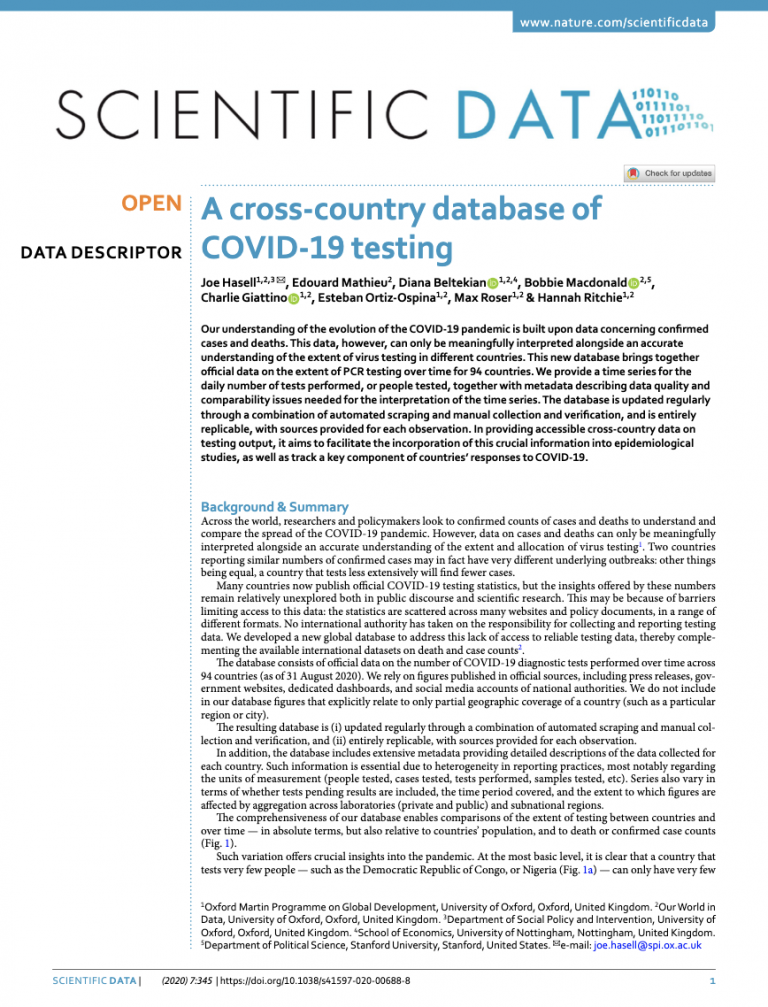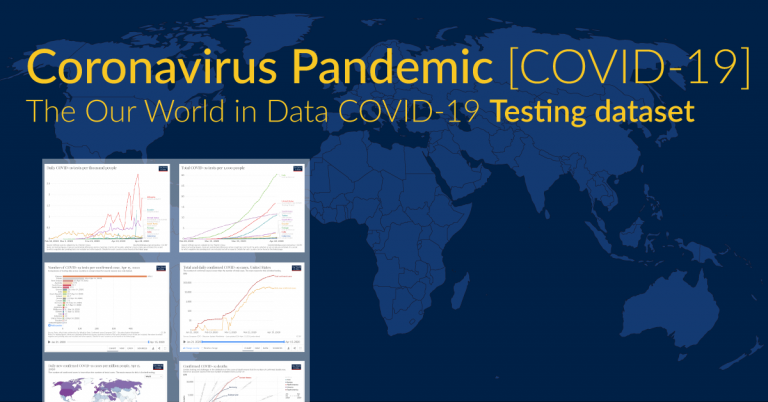Testing for COVID-19 is our window onto the pandemic and how it is spreading. Without data on who is infected by the virus, and how many people are dying from the infection, we have no way of understanding the pandemic. Without testing there is no data.
Because of this, counts of confirmed cases and deaths depend on how much a country actually tests. A country that tests very little will miss most of the cases, and may also fail to attribute to coronavirus all the deaths caused by the disease.
So to understand the data that tells us about the pandemic – the data on confirmed cases and deaths – we also need data on testing.
Without this data we can not know which countries are actually doing well, and which are just underreporting cases and deaths.
For this reason, since March we have focused our efforts on building a global dataset of COVID-19 testing. Over this time, this dataset has been used widely: by the UN, the OECD, the White House, by many news outlets and by epidemiologists trying to understand the pandemic and what lies ahead.
This week our testing dataset was published in Nature Scientific Data, a peer-reviewed journal for scientific datasets.
As part of this process, we submitted a manuscript that describes the dataset and how it is compiled in detail. You can find the manuscript here:
Our dataset has grown to include testing data for over 100 countries, covering more than 70% of the world’s population.
Our latest testing data is always available at at our Coronavirus Testing page. As with all of our work, this data is open-access, free and available for everyone to use.
Please cite the dataset as: Hasell, J., Mathieu, E., Beltekian, D. et al. A cross-country database of COVID-19 testing. Sci Data 7, 345 (2020).
You can also find it, along with all our coronavirus data, in our complete COVID-19 dataset on GitHub.



